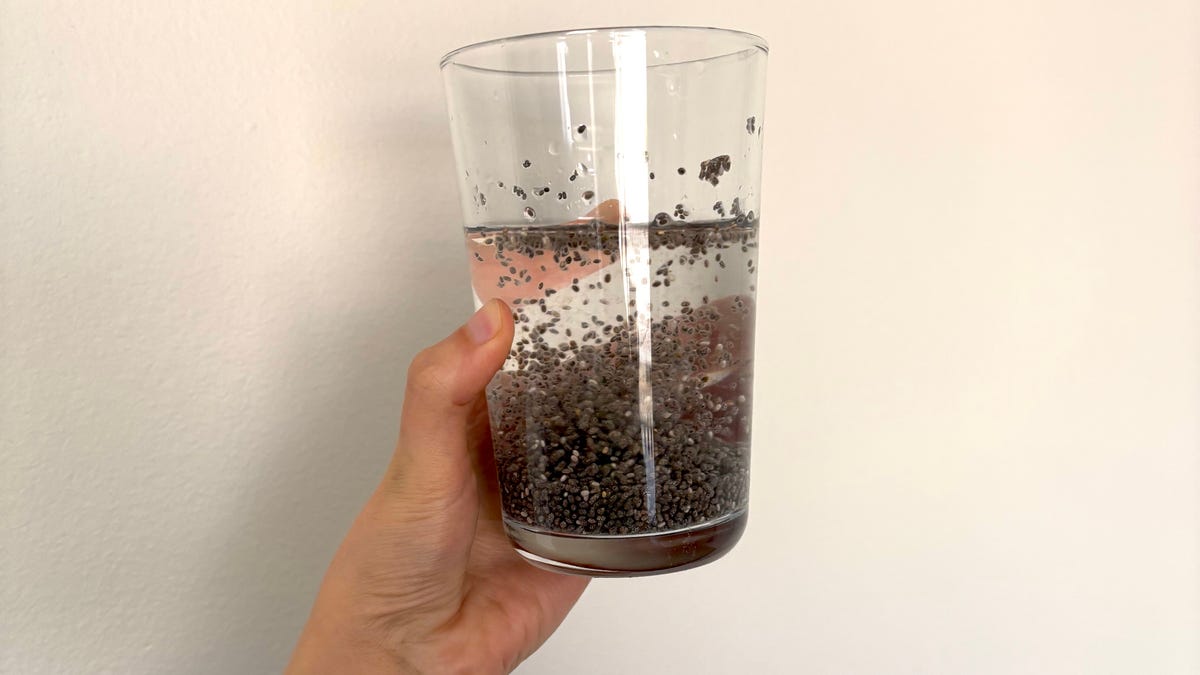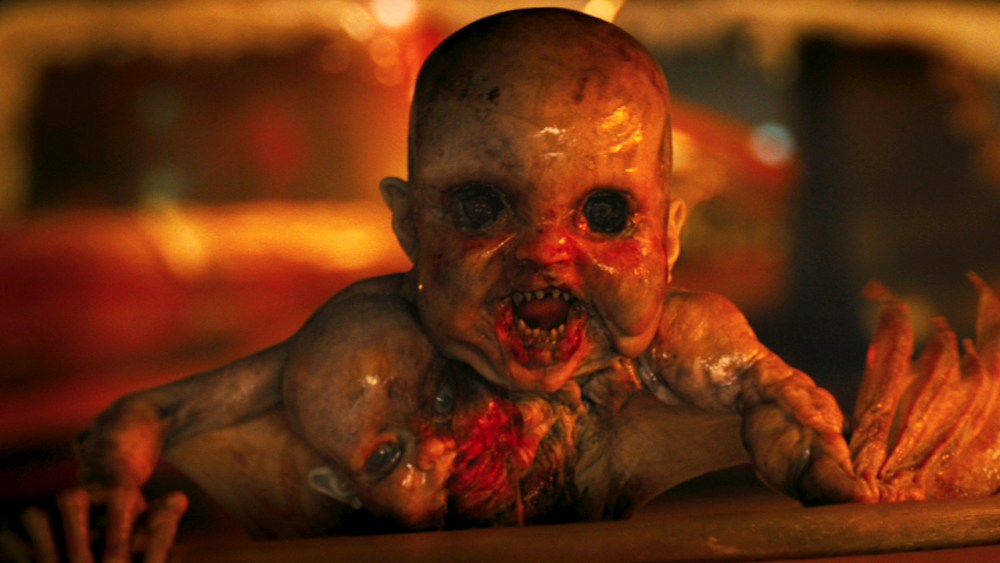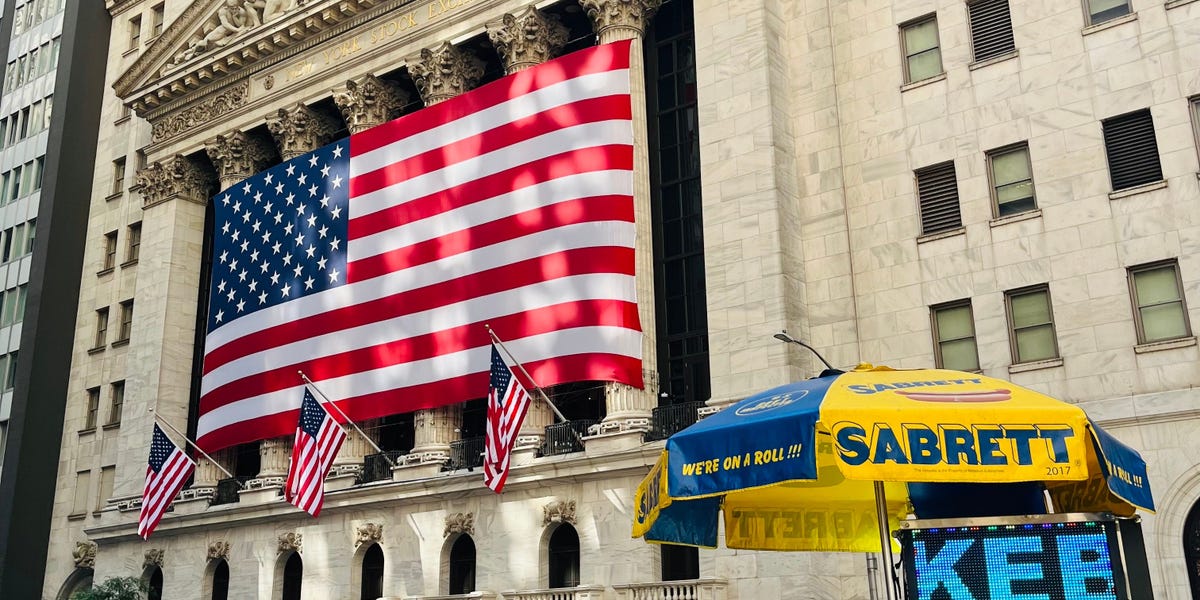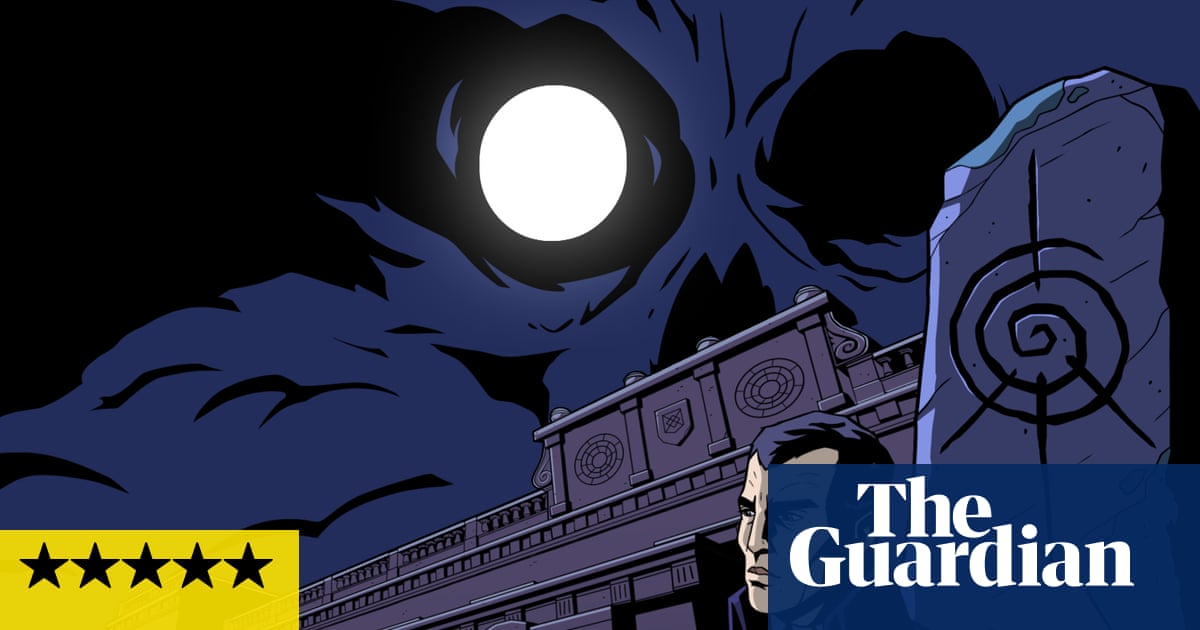SPOILER ALERT: This story contains spoilers from the series premiere of “It: Welcome to Derry,” now streaming on HBO Max.
It doesn’t take long for “It: Welcome to Derry” to remind audiences that they’re back in Stephen King’s eponymous cursed town. The first episode alone features enough blood, guts and gore to rival either of the Andy Muschietti-directed “It” films — and much of that pours out within the first 10 minutes.
The HBO series opens with an 11-year-old boy named Mattie (Miles Ekhardt) hitchhiking his way out of the Maine town circa 1962. He’s picked up by a family — a bespectacled father (Mark MacRae), pregnant mother (Zoë Barrett-Wood), teenaged daughter (Audrey Wellington) and boyish son (Lochlan Ray Miller). At first they seem safe and friendly, but such descriptors are always cause for caution in Derry.
Courtesy of Brooke Palmer/HBO
The family says that they’re heading the Portland, but as they continually pass the “Welcome to Derry” sign, Mattie becomes suspicious that they’re driving in circles. Meanwhile, the son who’s going through a phase of spelling out words starts to spell out increasingly dark terms like “kidnapping,” “maggots,” “cadaver,” and “strangulation,” at his mother’s request. Mattie’s pleas that they pull over fall on deaf ears and all doors are locked.
Then, the mother starts going into labor. The family join their son in a euphoric chant of “O-U-T! O-U-T!” as the woman’s belly begins to move and blood and guts ooze from between her legs. A bloody head soon emerges and a deformed, fetal infant is pushed out onto the car floor.
Shrouded in darkness beneath the dashboard, the baby emerges as a two-headed, bat-winged demon, flying around the car like a feral animal leashed only by his mother’s still-attached umbilical cord. Things calm down only when the entire family, including the newborn, pause to set their sights on Mattie. The baby then lunges at Mattie as we cut to the window shattering, presumably signaling the boy’s brutal demise.

Courtesy of HBO
“Welcome to Derry” serves as a prequel to the two “It” films: 2017’s “It: Chapter One” and 2019’s “It: Chapter Two.” It chronicles the origins of Pennywise the Clown and the previous generation’s encounters with the town’s haunting curse.
Like its cinematic predecessors, the show creates its harrowing sequences with a blend of modern visual effects and old school prosthetics. What are practical effects and which are digital ones is sometimes hard to distinguish, as they seamlessly mix to terrifying, yet visually spectacular effect. The cold open, for example, made use of an LED sound stage and a digital model of the demon baby alongside prosthetic legs for the mother and a practical puppet waved around on a stick.
To learn more about how “Welcome to Derry” pulled off the shocking sequence, Variety interviewed Daryl Sawchuk and Sean Sansom for an exclusive conversation. Sawchuk served as the series’ VFX supervisor, while Sansom served as the head of the prosthetics department after previously working in the makeup department on both “It” films.
How did you both find yourselves working on “Welcome to Derry”?
Sean Sansom: For me, it was the previous relationship with Andy and Barbara Muschietti, having worked on the first two films and a few other projects. Andy likes to have his team together, and — because the show is in the same universe as the films — he wanted it to have the same style and look.
Daryl Sawchuk: When Andy was finishing “The Flash” for Warner Bros., the visual effects supervisor on that film, John Des Jardin, is actually kind of a mentor of mine — someone that I’d done a bunch of films with over the years. When they were looking for a visual effects supervisor, John gave me a really nice, flattering review, and then I had a conversation with Andy and we hit it off really well.
Given your respective titles and departments, tell us how you both worked together to bring the show to life?
Sawchuk: My responsibility on it from pre-production, through production, all the way through post was both working out some of the previz and early ideas with other department heads, including Sean, for visual effects sequences on the show. I was in charge of being there on set to make sure that we were getting all of the reference passes, all of the material that we needed to add visual affects into later and then carry through to post-production.
Sansom: I looked after all of the builds. All through pre-production I held concept meetings, meeting with other department heads and figuring out what we were going to build physically for set. I was also assisting Daryl with what he needed in regards to physical references, which they would either scan or use as a basis to build their [digital] models around. And then I was on set for all the filming as well.

Courtesy of Brooke Palmer/HBO
When you both read the script for the first episode, and you immediately see this gruesome cold open birthing scene, what goes through your minds knowing that it will require a lot of heavy effects and prosthetic work?
Sawchuk: For me, you’re obviously shocked by what you’re reading on the page. You’re just like “Holy shit. I realize this is for HBO, but man, this is going to be a really dark, gruesome and gritty opening and very shocking.” Then the storyboards start. Andy starts drawing some himself, and he’s got a storyboard artist that he works with, and you realize some of the angles that he’s asking for are quite graphic. We started with some previz early on, just to help facilitate blocking things out in terms of action, so we can understand what angles we needed to shoot.
Then, we were able to hand it off and work with guys like Sean and our costumes team to figure out what we needed to build practically. We realized that we were really going for it. My approach to visual effects is always to try to get as much practical stuff as possible, and it was great that Andy and Sean feel the same. So we built a lot of practical reference for us to scan and shoot for the baby that comes out, but Sean’s team also built the woman’s fake legs and the birthing rig. We had a lot of fantastic practical goo and blood and all sorts of stuff that we used as a starting point and then expanded upon when we got into post.
Sansom: In regards to the script, reading any project of Andy’s, I immediately know that it’s not going to be easy. It’s always going to be a challenge. Like Daryl said, you don’t anticipate seeing everything that is described in the script, because you think that they’re going to tone it down a bit for TV, but not with Andy. Then, there are all of the complications involved with the shots, like how it takes place in a car. Normally, it’s fine to build stuff, like the actress had a fake belly and legs so that we could push the baby out from behind, but now she’s also sitting in a car seat, and the car seat is part of a car from the late 1950s, and they’ve only got two of them. So, they have to make a fake seat to mimic the car seat. The art department gets involved and it’s a large group effort. This all comes out of the concept meetings, where we try to figure out who’s going to look after what and what’s the crossover. Of course, we have a lot of crossover with Daryl’s team for the creatures and everything. Andy wanted a practical baby too, so we built a baby.

Courtesy of HBO
How did you use the practical baby? Is it in any of the final shots, or was it just a reference?
Sansom: We had two of them. We made one that was for Daryl to use for reference, which had the arms and wings outspread, and we put that on a stick to fly from this person to that person and all over the place inside the car. But we also had one that was all folded up in the fetal position, and that one was actually pushed out of the belly and used for the beginning of that scene.
How did you make the legs and belly for the birthing shots?
Sansom: It’s like the old magician’s trick with the body cut in half. The actress was actually kneeling upright. Her arms and her shoulders and her head and neck were sticking out from the car seat, and then we had a full fake body from the collarbone down, with rods going through the bottoms of the feet, through the hole in the floor of the car so that we could manipulate the legs from underneath.
Sawchuk: I think Sean is also understating the constraints of the physical space a little bit. We shot this on a volume wall, so we had interactive light. We could have done this on a bench with no seat and maybe just a dashboard, and Sean probably would have had a lot more room to move around and do all of his puppeteering. And he would have been in every shot and we would have had to paint him out. As is, I think maybe there was one shot where we had to remove an arm or something, but because we wanted to use the volume wall for lighting purposes, we tried to keep the car in as fixed a state as possible. Doors were shut all the time, so Sean had to come in from behind or underneath the seat. We had to figure out a way for him to get through that way, but it allowed for those first few shots where the baby comes out to be entirely practical. We added some additional blood and guts to the scene, but the baby coming out is all Sean. It was real lighting, viscous goo and goop and all of that stuff. And it looks great, kind of an homage to old school horror and traditional techniques, with the benefits of some new technology.
How was using the puppet on set with the actors?
Sawchuk: Sean’s team is fantastic. Like, we’re always looking for real lighting reference, and he built out a baby. I can’t remember if we had designed something or maybe provided a 3D sculpt that he then took and made a mold of and did all the painting and stuff, but we had something that was great for lighting reference, so that we could see how the light was interacting with it. We would puppeteer the creature on a stick through the scene. We would see how the light changed as it traveled from the front to the back of the car. It was also good sometimes for actor reference. We’d actually get a real reaction. We’d do a rehearsal take, and Andy would also dive in there. If we had to have something smush up against one of the actors faces, we could use this baby on a stick in order to do that. I think we also had some softer, smaller parts like just the head for interactivity. It gave Andy an opportunity to direct an actual performance out of the actors, so they’re responding to something real. It just helps give you a more believable performance.
Sansom: Andy had a concept artist come up with all these ideas that fits his style. He’ll design a lot of things himself too. He’ll draw it out in the concept meetings on the white board to explain what he’s looking for, which is great for us. He provided some of these concept designs, which then I used to sculpt the baby and the head.
How was it working with such a young cast in this first episode and throughout the series?
Sawchuk: It’s always interesting working with kids. Some child actors have had more experience than others. Matilda Lawlor I worked with seven years ago, and that was her first time she worked with puppeteering and holding on to gray, stuffy objects that were later replaced with CGI. So she had some experience, which was really neat, but not everyone did. So I think it’s another reason why it’s great to have some practical references and set pieces from Sean’s team, so that they can kind of understand “That’s the thing I have to react to” and they find the fun with all of it.
Sansom: Yeah, the kids are great. It was a lot like “It: Chapter 1.” The kids get really into it because they’re dealing with make believe and it’s like Halloween every day on set when they’re dealing with creatures and blood and goo. They’re having a blast.
Lastly, what’s something on the show that people might assume is a digital effect, but is actually practical — or vice versa?
Sawchuk: Well, there’s the opening. I think everybody assumes that things are mostly digital nowadays, but this was really and homage to previous fantastic makeup and prosthetic effects and we were really tried to preserve that and just add on top of it.
Sansom: It’s tricky, because pretty much everything we’ve done on the show is a crossover, where we’re both involved in the scene. There’s a little bit of practical and a little bit of digital. It’s hard to tell. I’m not even sure that I could tell who did what — not in the first episode anyway.
This interview has been edited and condensed.
First Appeared on
Source link













